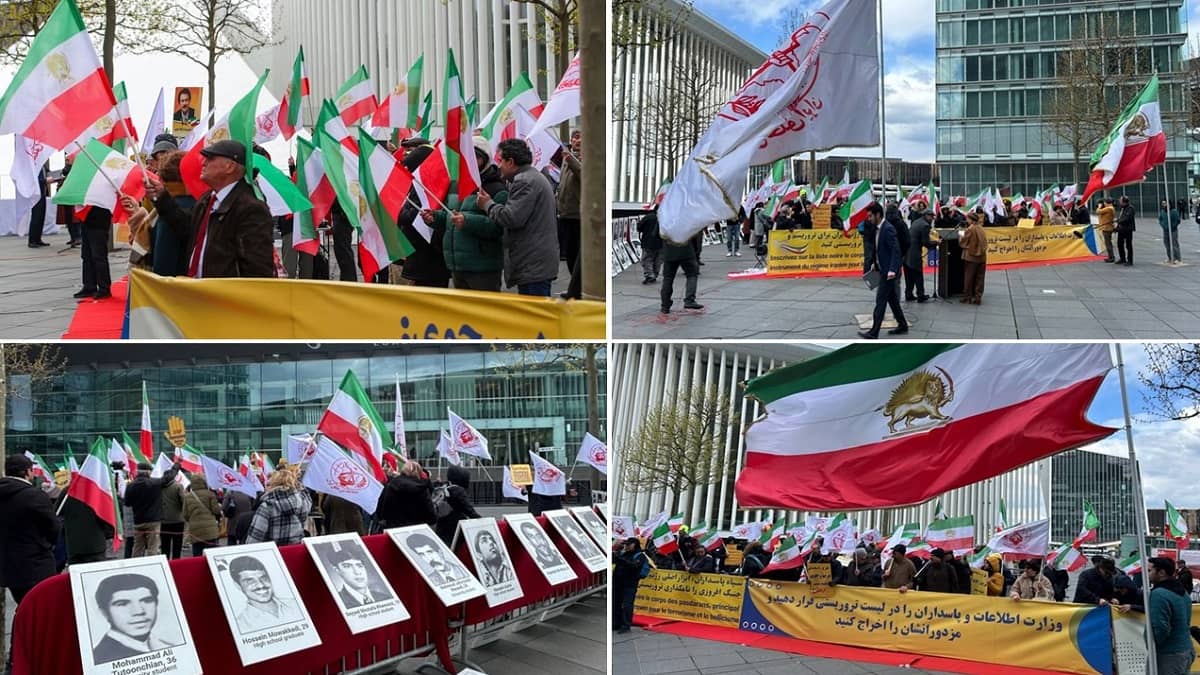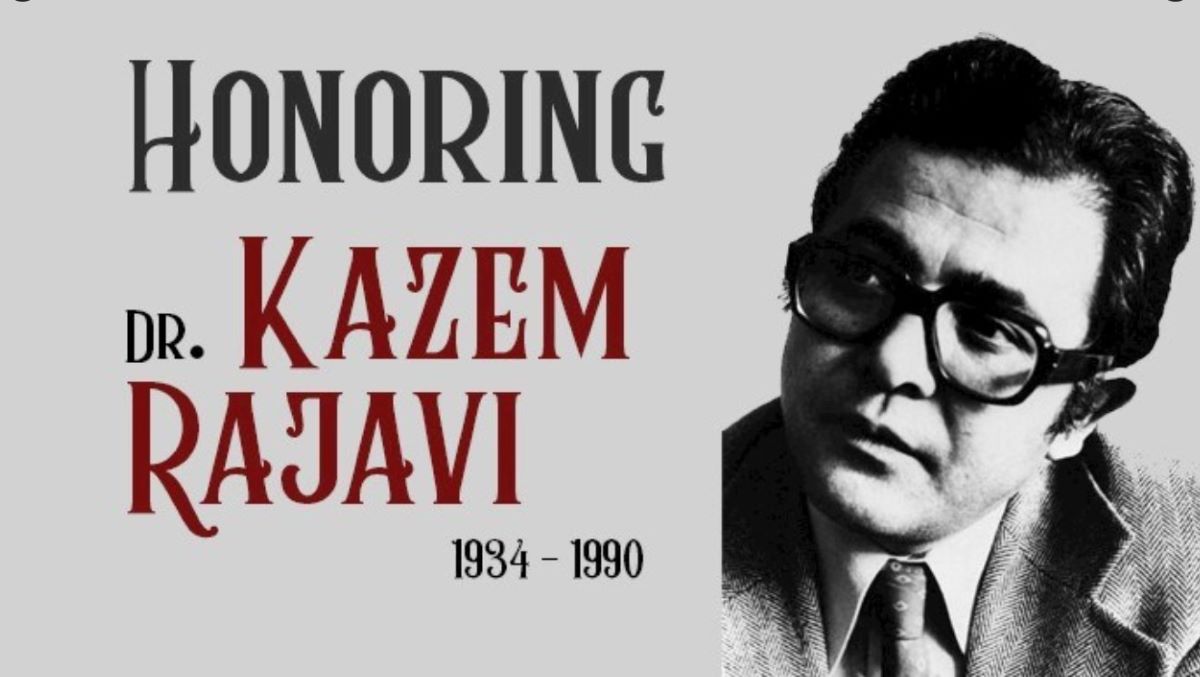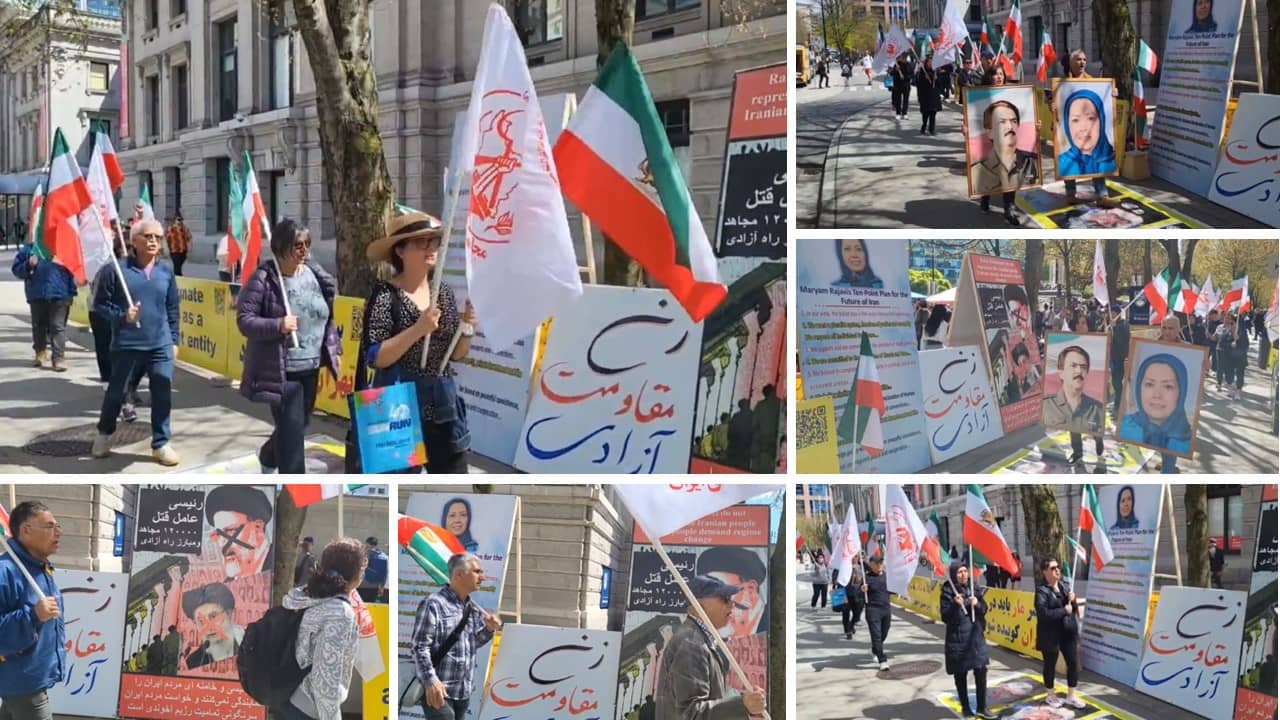Hidden layers of violence against women in Iran
By Daniel Mahdavi
Since women are an important part of every society and play a key role in shaping it, violence against women is one of the social harms that unfortunately has many negative consequences.
According to psychologists, women who are subjected to violence also face difficulties in fulfilling their social and individual duties and responsibilities.
In Iran, violence against women has been institutionalized in the law of the clergy. The ruling mullahs regard women as second-class citizens that must be locked up in houses to raise children. The mullahs consider women as sex slaves.
In Iran, laws such as compulsory veils and gender separation in public places, buses and even universities and workplaces are some of the most egregious discriminations against women.
Every year, thousands of Iranian women are assaulted on the streets and public places on the pretext of “bad hijab”, and they’re beaten, flogged and jailed.
Majid Abhari, a regime expert on violence against women, says: “Violence as one of the most unpleasant behavioral responses picks out victims from all walks of life, especially women and children.”
Unfortunately, despite the fact that Iran is one of the signatories of the Convention for the Protection of the Rights of Victims of Violence, the scope of violence against women has also extended to children.
Violence against women in Iran is not limited to beatings, punishments, or emotional deprivation. Financial and other social limitations are other forms of violence against women. Of course, this type of violence is referred to as covert violence. Women in Iran are often subjected to these kinds of violence, including acid attacks, fires, or very violent beatings.
The deeper tragedy is that many Iranian women are unable to access justice because of cultural issues or concealing physical and psychological abuse, because the constitution of the mullahs doesn’t even respect the testimony of women. According to the laws of the Iranian regime, the testimony of two women is equal to that of one man…
Examples of Violence Against Iranian Women
A look at some of the actions against Iranian women in 2019 illustrates the 40-year situation of Iranian women:
In a court hearing on Saturday, September 7, 2019, Asal Mohammadi, Sanaz Allahyari and Sepideh Qolian were sentenced each to 18 years in prison, a total of 54 years. Three other activists including Amirhossein Mohammadifar, Ms. Allahyari’s husband, were also sentenced to 18 years each.
Assal Mohammadi, a civil activist and student of pharmacy, was taken to Evin Prison on August 4, 2019. She was arrested in December 2018 and released in late January on a 400-million-toman bail. Ms. Mohammadi was arrested again in August.
Mohammadi had written and published posts in support of the protests by workers of Haft Tappeh Sugar Cane Company and the Steel Workers of Ahvaz.
Sanaz Allahyari, member of the editorial board of GAM internet magazine, was arrested in January 2019. GAM wrote about social issues, including on the rights of workers. Ms. Allahyari was held for months in the Intelligence Ministry Ward 209 and transferred to the general ward in April. She suffers from various illnesses, but prison authorities have so far not allowed her to go to hospital for treatment. Ms. Allahyari was on hunger strike for 12 days.
Sepideh Qolian was arrested in January 2019, for a second time. She says she was tortured physically and psychologically while in detention. In July 2019, she and a number of other inmates were badly beaten and brutalized in Qarchak Prison by dangerous inmates enticed by prison authorities.
The Court of Tehran held Saba Kord Afshari trial on August 19, 2019. on August 19, 2019 :The Court of Tehran sentenced Saba Kord Afshari to 24 years in prison for protesting the compulsory veil and refusing to cooperate with the regime and make forced confessions.
The charges leveled against her included “propaganda against the State” and “association and collusion aimed at national security.”
Ms. Kord Afshari was first arrested in August 2018 during street protests in Tehran. She was taken to Qarchak Prison and detained in limbo. Then, she was sentenced to one year in prison for “disruption of public order” and was transferred to the women’s ward of Evin Prison.
On August 5, 2019, Branch 28 of Tehran’s Revolutionary Court sentenced labor activist Atefeh Rangriz, presently imprisoned in Qarchak Prison in Varamin, to 11 years and six months in jail and 74 lashes.
Labor activist Atefeh Rangriz was arrested along with a number of other labor activists during May 1 protests in Tehran. In an open letter on August 15, 2019, she described the conditions in Qarchak Prison as “hell.” In this letter, Rangriz wrote that each of the ten wards in Qarchak Prison accommodates between 120 to 150 inmates. Every 12 prisoners are held in a “cabin” only 8 square meters.
Nasrin Javadi, another retired worker of social security, was sentenced to seven years in prison and 74 lashes for participating in the Labor Day protest. Journalist and student activist, Marzieh Amiri, was sentenced to 10 years and six months in jail and 148 lashes, for taking part in the May Day protest in Tehran.
Parvin Mohammadi, vice president of the Free Union of Iranian Workers, was sentenced to one year in prison upon the verdict of the Court of Karaj which tried her on August 24, 2019. She is accused of “propaganda against the state.” She was arrested by security forces during a Labor Day gathering in Karaj on April 26, 2019.
On Monday, August 26, 2019: Three civil activists, Shima Babaii, Mojgan Lali, and Shaghayegh Mahaki were sentenced to a total of 18 years in prison.
Each of them was sentenced to six years in prison. Their court hearing was held on April 21, 2019, in Tehran and informed them of their charges which included “association and collusion against national security” and “propaganda against the state.”
On August 28, 2019, the Iranian regime declared a new plan called “Nazer 1” to further step up suppression of women for improper veiling.
The new plan is designed to put maximum pressure on women. According to the new plan, the police will be present in public places, major stores, and beaches to give warning to women who are considered improperly veiled according to the regime’s standards.
The Iranian Regime’s police have already implemented the Nazer 1 plan to monitor women who remove their veils inside their cars.
Heavy Sentences for Women’s Rights Activists
Three women’s rights activists held in Qarchak Prison (Shahr-e Ray) have been sentenced to a total of 55 years and six months in prison, all of which must be implemented. The Revolutionary Court of Tehran informed Yasaman Aryani, Monireh Arabshahi, and Mojgan Keshavar of their sentences in the absence of their lawyers on Wednesday, July 31, 2019.
August 13, 2019: Marzieh Amiri, a journalist and student activist was sentenced to 10 years and 6 months in prison and 147 lashes.
The trial of Marzieh Amiri was held in Tehran on August 13, 2019, presided by the notorious judge, Mohammad Moghiseh. Her sister, Samira Amiri wrote on her personal social media that her sister was sentenced to 147 lashes and 10 and a half years in prison, six years of which can be enforced. Marzieh Amiri suffered from epileptic seizures at the time of interrogation due to physical and psychological pressures. But Judge Moghiseh has opposed her bail and temporary release for medical treatment.
Arresting cyclists Women and those who enter the stadium
An young Iranian female football fan who set herself on fire a week ago has died. The woman, Sahar Khodayari, known as “Blue Girl”, was arrested in March when she tried to enter a football stadium.
After being jailed for three days she was released on bail and waited six months for her court case.
But when she appeared at court she found out it had been postponed because the judge had a family emergency. Because of her unsettled situation and out of despair, Khodayari set herself on fire. She died a few days later in the hospital.
July 30, 2019 : 70 women cyclists were arrested in Tehran’s Vali-Asr Square. Gholam Hossein Ismaeli, spokesman for the Judiciary, confirmed the news on the arrests of 70 women cyclists when talking to a reporter. He said the 70 women cyclists had been arrested for breaching the rules of “chastity and Hijab.”
Ismaeli did not provide any details particularly around the timing of the arrests of the 70 women cyclists. (The state-run ISNA news agency – July 30, 2019)
Earlier, Massoumeh Ebtekar, deputy to Iranian regime president Rouhani in family and women’s affairs, had earlier confirmed that “there are no rules in Iran which could prevent women from riding bicycles.”
Last July, a research done by the Office of Cultural Studies of the Research Center of the mullahs’ parliament indicated that some 70% of Iranian women do not believe in the mandatory dress-code, namely the head-to-toe black veil called “chador.” Nevertheless, the regime has further stepped up pressure and restrictions on women under the pretext of improper veiling.
It is worth mentioning that the Iranian regime still does not allow women to enter stadiums, and despite warnings by FIFA, it has not taken any steps to allow women to watch football.
On August 3, 2019, The World Football Federation declared that it has given the Iranian Federation until August 31 to determine the presence of women in sports stadiums.
Arresting women for taking part at parties
July 30, 2019: An IRGC (Islamic Revolutionary Guard Corps) official in Hamadan Province announced the arrest of 20 women at a party.
Hamadan’s IRGC official announced the news as “dismantling the assembly of a women’s network aimed at promoting a Western lifestyle”, and without mentioning the details and timing and how the group was dismantled, only stated, “the 20 detained women were dealt with.”
Ali Akbar Karimpour, public relations and propaganda officer for the Hamedan Army of the Guardians of the Islamic Revolution, told the state-run ISNA news agency that “Virtual and real-life groups have networked to recruit women and girls in Hamadan to prepare them for special and anti-cultural events.” (state-run ISNA News Agency – July 30, 2019)
Early marriages or forcible marriages, flip-side of the coin of discrimination against women
Early marriages and child marriages are examples of violence against women and the worst form of oppression against girls and the future of women of Iran. According to statistics released by the regime, at least 43,000 girls under 15 and 180,000 girls under 18 get married in Iran every year. There are 24,000 widows under 18 and 15,000 widows under the age of 15 in Iran.
But the state-run daily Entekhab published a report in March 2019, citing Ali Kazemi, advisor to the legal deputy of the Judiciary Branch. According to Kazemi, “Between 5 to 600,000 children get married every year (in Iran) according to the officially-registered data. The main problem is that there are marriages taking place beyond those officially registered.” (State-run daily Entekhab – March 4, 2019)
Behzad Sattari, the general director of the Welfare Organization in Ardabil admitted, “Out of a total of 12,000 marriages over the past year in this province, 37 percent (i.e. 4,400) have been from among girls between 10 to 14 years of age. This is while 42 percent of the total number of marriages in this province were from among women under 19 years of age.”
On common practice of early marriages in the city of Khalkhal, another city in Ardabil Province, Sattari said, “Last year, from a total of 712 marriages in this city, 7 percent were from among young girls between 10 and 14.”
He said: Based on the data published by the national registrar, 37,000 girls between 10 and 14 years of age have married in 2015 in Iran.
The Director of Iran’s Census Organization in Hamadan Province stated that in 2018, 44 girls under the age of 15 were pregnant in Hamadan.
In addition to the pregnancy of 44 girls under 15 in Hamadan, the Director of Iran’s Census Organization in Kurdistan Province, Hassan Soumi also said, “4% of divorces are for girls under the age of 18. About 16 percent of marriages registered during the first four months of 2018 are girls under the age of 18.” (State-run IRNA News Agency – August 3, 2019)
Forcible Marriage Among Reasons For Suicide Among Young Iranian women
According to the reports of the past month, forcible marriage has been among the reasons for suicide among young women in Iran who in the absence of any legal support, find their only way out of problems in ending their own lives.
On Wednesday, June 5, 2019, Souma Khedri, 19, ended her own life by taking rice pills. Souma who lived in Kiyouleh village in Baneh (western Iran), had been compelled into forcible marriage with a relative against her own will. Souma Khedri’s family refused to turn her body in to the Coroner’s Office.
In another report on forcible marriage from Piranshahr, Sara Esmaili, 17, who had been forced to marry a relative ended her own life on Friday, May 31, 2019, in the village of Pasveh.
August 26, 2019: A 16-year-old young woman by the name of Ziba set herself on fire to evade her family’s insistence that she marries an old man.
The state-run Khorasan daily published a report on August 26, 2019, saying that the young woman was being forced into this marriage by her step mother. According to this report, many parts of Ziba’s face and body got burned, but she has been released from hospital.
Also in June, there were a reports on suicides of young woman due to forcible marriage. Sara Esmaili, 17, from Piranshahr, committed suicide to evade forcible marriage due to lack of legal protection for women under the law.
In another shocking report from Dehloran, a married woman by the name of Mandana Hosseini, with four sons, set herself ablaze to protest her husband’s second marriage. She died after four days in a medical center in Ilam on August 19, 2019, due to the extent burns.
Based on the clerical regime’s oppressive marriage laws, men can have four wives. At the same time, they are authorized to divorce their wives without informing them.





